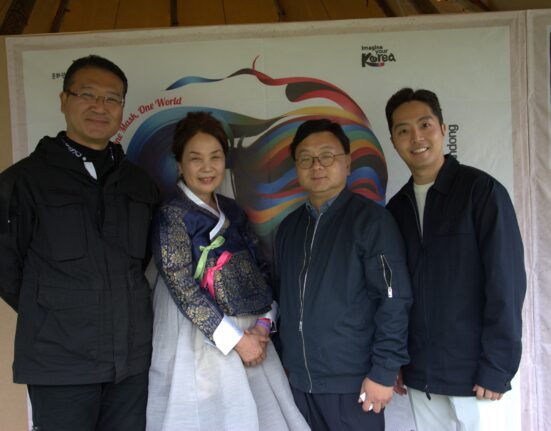A wooly coat and a head of human hair have more in common than you think; not only do they help retain body heat, they’re both made from keratin protein fibers. Now, a Dutch startup is questioning why one is worn and the other wasted.
Human Material Loop hopes to transform the fashion industry by turning human hair into a textile. So far, it has made prototypes of human hair coats, jumpers, and blazers — with the hope that one day, clothing companies will buy rolls of its alternative material for their own designs.
Co-founder Zsofia Kollar says she has long been fascinated by hair’s potential as a fabric. She was intrigued by the emotions people harbor towards it —“How much we care about our hair, but once it’s cut, we are so disgusted by it,” she said.
When the Covid-19 pandemic hit, Kollar had an identity crisis as a designer and decided to rectify the hair industry’s waste issue.
Waste not …
Every minute, salons in the US and Canada produce 877 pounds of waste. When hair breaks down without the presence of oxygen, like in a garbage bag buried in a landfill, it releases greenhouse gases that contribute to climate change.
According to Human Material Loop, 72 million kilograms of human hair waste end up in European landfills every year, the equivalent in weight of seven Eiffel Towers.
“It’s a big abundant waste stream that currently has no scalable solution,” Kollar said. She adds that most countries burn this waste, and that many alternative solutions are not environmentally friendly or aren’t suitable to be widely used.
Kollar explains that using the hair fabric is not that different from knitting a sweater with any other material. Short hairs are spun together and transformed into a continuous thread to make a yarn, and then dyed with pure pigments. She added that as the company scales up production it may dye the yarn or fabric, depending on which is most efficient.
Human Material Loop’s first prototype was a sweater with a wool-like feel. “I needed to make a product that people can relate to, and the jumper was one of the most feasible prototypes we could make, but also the most relatable,” Kollar said.
Since then, the company has tested other prototypes, including an outdoor coat stuffed with hair to provide thermal insulation, which it tried out in harsh conditions during an expedition to Aconcagua, the highest mountain in Argentina.
These designs aren’t available to buy — the aim is instead to supply the material for other designers and brands to work with. Kollar says the price should be competitive with wool once it reaches a bigger production volume.
“We do know that to wear human hair on our bodies, it’s not something that most people are ready [for] yet,” Kollar said. But she believes the idea could grow on the public. For Kollar, it’s not simply about wearing a jumper made from human hair for the novelty or sustainability aspect; she argues that human hair is an incredibly durable material.
Human Material Loop sources its hair from salons in the Netherlands, Belgium and Luxembourg, using hair that is cut or broken off because it says that does not contain nuclear DNA that could identify an individual. It is working on establishing a documentation chain to trace where its material comes from and where it goes.
Growing industry
Historically, human hair has been used as a textile in many different cultures. In Micronesia, the Kiribati tribe created woven armor made from natural materials including coconut fibers, shark teeth, palm leaves and human hair, while in the 13th century, people in what is now the Southwestern United States crafted socks by knotting together strands of hair.
Kyoto’s Higashi Hongan-ji Temple is one of the world’s largest wooden structures. After a fire damaged it, ropes made from human hair donated from across Japan were mixed with hemp and used during its reconstruction in the 19th century.
But using hair as a textile isn’t without challenges, explains Sanne Visser, a Dutch material researcher, designer and maker, and associate lecturer at the University of the Arts London, who isn’t involved with Human Material Loop.
“There’s still a taboo around human hair as a material,” she said. “We don’t value it really as a resource — it’s seen as waste, especially once it’s cut off.”
In her “Locally Grown” project for London’s Design Museum, Visser worked with hairdressers and imagined a future where hair becomes a valuable resource, coining the term “hair farming.” She also redesigned the barber’s chair so it could catch cut hair – saving time for the hairdresser, and the recycler.
Visser says ultimately the implementation of human hair in our products isn’t simple. “There is much more work to do to get people’s heads around into accepting it as a material,” she said, but added, “I can definitely see it coming more into our daily lives, with time.”







